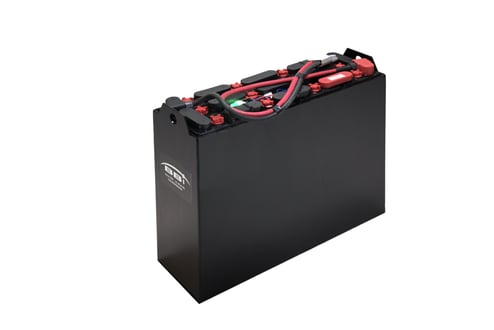
Correct Forklift Batteries Sizing
When it comes to running a warehouse or manufacturing facility, you know that the lifeblood of your operations often hinges on the right equipment. Among these, forklift batteries play a pivotal role. But have you ever considered how crucial correct forklift batteries sizing is to your workflow? Understanding how to size your forklift batteries appropriately can save you time, money, and headaches down the line.
Correct Forklift Batteries Sizing: The Foundation of Efficiency
Sizing forklift batteries is not just about picking a random option off the shelf; it's an art and a science combined. To get it right, you'll need to consider several factors that contribute to both the performance and longevity of your forklifts.
Understanding Battery Types and Their Specifications
First things first! You need to familiarize yourself with the types of forklift batteries available on the market. The most common types 80 volt flat plate forklift batteries are:
- Lead-Acid Batteries: These are traditional battery types that provide reliable performance for standard applications. They usually come in two styles: flooded lead-acid and absorbed glass mat (AGM).
- Lithium-Ion Batteries: Gaining popularity due to their lightweight nature and fast charging capabilities, lithium-ion batteries can be a game-changer for high-demand environments.
Key Specifications to Consider
Why does this matter? If you select a battery with insufficient voltage or ampere-hours for your application, you may find yourself constantly recharging or worse—your forklift might fail mid-operation!
Calculating Your Power Needs
So you've got some specifications squared away; now what? It's time to calculate your actual power requirements based on how you use your 48 volt flat plate forklift batteries forklifts.
Factors Affecting Power Consumption
- Load Weight: Heavier loads require more power. Calculate the average weight you'll be lifting during operation.
- Operational Time: How long do you run the forklifts each day? Extended operational hours increase energy demands.
- Duty Cycle: Is it intermittent use or continuous? Knowing whether you're operating at full capacity or not will significantly impact your battery selection.
Formula for Calculation
You can estimate your required Ah using this formula:
[ \textRequired Ah = \left(\frac\textLoad (lbs) \times \textDistance (miles)\textEfficiency Factor\right) \div \textBattery Voltage ]
For example, if you're lifting 3,000 lbs over 5 miles with an efficiency factor of 0.85 and a battery voltage of 36V, plug those numbers in:
[ \textRequired Ah = \left(\frac3000 \times 50.85\right) \div 36 ]
This calculation gives you a clearer picture of what kind of battery specifications you'll need.
Correct Forklift Batteries Sizing: Importance of Maintenance
Even after choosing the correct fork-lift battery size, maintenance is where many businesses fall short. Neglecting proper care can lead to premature battery failure and increased operational costs.
Daily Checks You Shouldn’t Ignore
Charging Best Practices
- Always recharge after each shift rather than waiting until it's completely drained; this helps prolong battery life.
- Use smart chargers whenever applicable—they optimize charging times and reduce risks associated with overcharging.
Common Mistakes in Sizing Forklift Batteries
Even seasoned professionals can make mistakes when sizing their forklift batteries! Here are some common pitfalls to avoid:
FAQs About Correct Forklift Batteries Sizing
What happens if I choose the wrong size forklift battery?
Choosing an incorrect size can lead to inefficiencies, frequent breakdowns, or even permanent damage to equipment due to inadequate power supply.

How often should I replace my forklift batteries?
Typically, you should replace them every 5-7 years depending on usage patterns and maintenance practices.
Can I mix different types of batteries in my forklifts?
It's not advisable! Mixing different types can create imbalances leading to decreased performance and potential hazards.
What’s more efficient—lead-acid or lithium-ion?
Lithium-ion batteries generally offer higher efficiency rates but at a greater upfront cost compared to lead-acid options.
How do I know when my forklift battery needs replacing?
Signs include reduced run times despite full charges, physical damage, or swelling in case structure.
Are there any safety precautions I should take with forklift batteries?
Absolutely! Always wear protective gear when handling batteries and ensure adequate ventilation while charging them.
Conclusion
In summary, getting correct forklift batteries sizing right can significantly enhance your operational efficiency while reducing costs related to maintenance and downtime. By understanding the various specifications involved—from voltage needs all the way down to environmental considerations—you’re setting up not just your forklifts but also your entire business for success.
So next time you're faced with choosing a new battery, remember these tips! After all, being informed is half the battle won when powering up productivity!
